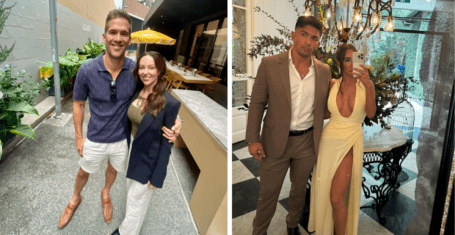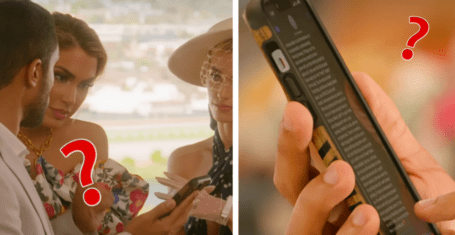
Opinion: The two costumed students are part of our ongoing racism problem in Bristol
We do not appear to be learning anything
When I logged into Facebook on Tuesday, the first thing I saw was a pair of pictures. The pictures showed two young white women wearing bright fake tan, orange jumpsuits and cornrows. I was not entirely surprised by the substantive content of the photographs (because racism at university is not new) but I still felt disappointed.
This could have stemmed from a number of things: perhaps from the fascinatingly stark colour contrast between the women’s scalps and their faces; maybe from the way they seemed to associate a beautiful black hairstyle with prisoners’ attire; or, possibly, from memories of a childhood and adolescence in which non-black people would mock, touch and sneer at my hair and skin, only to return with a single braid from their holidays in Barbados and/or an ‘exotic’ tan that ‘made us look alike’.
In all likelihood, it was a combination of these thoughts that made me sigh heavily at the pictures and anticipate the ensuing articles, deflections, non-apologies and inevitable piece from The Sun.
Examining the layers of racialised innuendo that the imagery connotes – especially at a time when Bristol is under heightened media scrutiny for the way it handles race – feels a bit like schadenfreude, except that nobody is a winner.
Bristol, as a city and as a University, is alive but ailing. The legacy and continued prevalence of racism is knitted into its DNA, it runs through the city’s arteries. It is not a secret that the city was built on the back of slavery, and I am confident that, at some point, most of us have decried this ugly past in order to pat ourselves on the back, sigh with relief and feel good about ‘how far we’ve come’. But, off course, we haven’t come far at all.
We are educated and entertained in buildings named after men whose fortunes were made through slave labour; three weeks ago, a race-relations advisor to the police was tasered by officers for no reason; discrimination is systemic and entrenched; and many of us grapple with daily racialised aggressions while the university’s responses have, until very recently, been tepid. Granted, we have Mr Marvin Rees, the UK’s first elected black mayor, but we know full-well that electing a black person to public office does not mean that racism has been eradicated (thanks, Obama).
We might wonder how the costumes fit into Bristol’s colourful tapestry of racist, offensive acts. Darkened skin, a typically black hairstyle and a prisoner’s jumpsuit. Allowing the women the benefit of the doubt, we could find a number of possible reasons for this choice of attire:
Students have a long history of wearing fun, whimsical, definitely-not-racist They wanted to continue in this beautiful tradition;
They were legit just super duper tanned and had spare prisoners’ jumpsuits and a cornrow lady (if this is the case, I would love her number. Reasonable prices only please);
They were actually trying to highlight, in a very meta way, that in spite of the attempts to make it happen, bottle-sourced orange skin will never, ever be ‘the new black.’
This has been done before
Yes, their actions could have been completely innocent. But the truth remains, the optics are bad. To put it frankly, they look like they are mocking black people. The idea that it is wrong to be frustrated at the pictures is disingenuous because anybody who saw them on the street, at the party and online would see two women donning costumes that speak directly to deeply held prejudices and stereotypes which, for some of us, have life-threatening consequences.
The hard truth is that the women’s actions are microaggressive, inhabiting a side of the spectrum of racism where privileged groups can choose to dismiss them but many marginalised people cannot, specifically because we must live with the underlying prejudice that functions as the backbone to ‘costumes’ like these.
I am not saying that these are bad women, and it is not in dispute that they are fully entitled to wear what they want. If they so desired, they would be perfectly within their rights to paint themselves brown, don dashikis, accompany these with Native American headdresses and use their hot yoga classes as Indian cultural enrichment just in time for them to ‘find themselves’ in Kolkata. This is the freedom that we (should, ostensibly) have in a democratic society.
But what we must never forget is that racism perpetrated in the present is steeped in history. Actions such as these cannot be viewed in a vacuum, precisely because they occur within a wider cultural context. It is entirely feasible that, in a world without minstrel shows, blackface and Zwarte Piet – not to mention the disproportionate criminalisation of black people – the pictures of these women would be less polarising.
But our skin, and our hair, and our morality have been racialised to such an extent that the thoughtlessness of their choice in costume screams far louder than any benign intent. The pictures are galling because they speak directly to preconceived notions about us which affect our lives every single day. Racism in this society has thrived precisely because many people are more ‘offended’ by the word racist than they are by the actual commission of racist acts.
I contend that the women in the pictures are neither victims nor devils – they are two people who made a questionable decision. Their actions have drawn ire because they are symptomatic of structural problems here at Bristol and throughout the United Kingdom. I mean, duh, we all make mistakes. Even Tricia, the character they supposedly sought to emulate, states that ‘we all make bad choices’. But what she forgot to add is that when we make bad choices, we can learn to educate ourselves and we can elect not to make those bad choices again. In other words, we can exercise common sense and common decency.
Mr Dube is right in his article – people of all races are capable of carelessly and harmfully donning cultural apparel that is not theirs. But I do not think the solution is to give white people a pass. Rather, it is to foster an environment where people of all races can have open, frank conversations about the way we interact with each other. Until this can happen, we need to listen to people whose lives are affected by the way in which they are racialised; we need to accept correction; we need to examine how race intersects with other marginalised identities.
Seriously. We need to do the work.









































